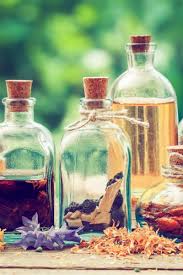How to Make Your Own Herbal Extracts for Health and Wellness

Introduction
- The power of herbal extracts in promoting health and wellness: Herbal extracts can capture the medicinal properties of plants in a concentrated form.
- How making your own herbal extracts allows you to take control of the quality, ingredients, and potency.
- Overview of the basic process of creating herbal extracts using different methods such as alcohol, vinegar, or glycerin.
1. Select the Right Herbs for Your Health Needs
- How to choose herbs based on their health benefits:
- For immune support: Echinacea, elderberry, astragalus.
- For relaxation and stress relief: Chamomile, lavender, lemon balm.
- For digestion: Peppermint, ginger, dandelion.
- For skin health: Calendula, plantain, aloe vera.
- The importance of sourcing herbs from reliable, organic sources or growing your own.
2. Choose the Appropriate Extraction Method
There are different methods for extracting the medicinal compounds from herbs. The choice depends on the herb and the desired result.
Alcohol (Tinctures)
- Alcohol is one of the most efficient solvents for extracting a wide range of plant compounds.
- Ideal for: Herbs like echinacea, valerian root, and ginseng.
- Step-by-Step Process:
- Ingredients: Fresh or dried herbs, high-proof alcohol (e.g., vodka or brandy).
- Preparation: Chop fresh herbs finely or crush dried herbs to increase surface area.
- Extraction: Place herbs in a jar, fill with alcohol (about 80-90% alcohol by volume), and seal.
- Infusion: Store the jar in a cool, dark place for 4-6 weeks, shaking it daily.
- Straining: After the extraction period, strain the herbs and transfer the liquid into amber dropper bottles.
Vinegar (Herbal Vinegar)
- Vinegar is a gentle, non-alcoholic option that’s especially good for extracting minerals and vitamins.
- Ideal for: Herbs like nettle, rosemary, and ginger.
- Step-by-Step Process:
- Ingredients: Fresh or dried herbs, apple cider vinegar or white vinegar.
- Preparation: Place the herbs in a glass jar.
- Extraction: Pour vinegar over the herbs, ensuring they are fully submerged. Seal the jar.
- Infusion: Store in a cool, dark place for 2-4 weeks, shaking daily.
- Straining: After the extraction period, strain the liquid and transfer it into bottles for storage.
Glycerin (Glycerites)
- Glycerin is a sweet-tasting, alcohol-free option for creating herbal extracts. Ideal for children or those sensitive to alcohol.
- Ideal for: Herbs like chamomile, lemon balm, and elderflower.
- Step-by-Step Process:
- Ingredients: Glycerin (vegetable glycerin), dried herbs.
- Preparation: Fill a jar halfway with dried herbs.
- Extraction: Pour glycerin over the herbs to cover them completely. Seal the jar.
- Infusion: Store in a cool, dark place for 3-4 weeks, shaking daily.
- Straining: Strain the mixture and store in dark glass bottles for use.
3. Deciding on the Herb-to-Solvent Ratio
- A general guideline is 1:5 for dried herbs to solvent, and 1:2 for fresh herbs.
- Adjust the ratio based on the herb’s strength and desired potency. For example, more delicate herbs may need a smaller ratio.
4. Strain and Store Your Extracts Properly
- Straining: After the extraction period, strain out the plant material using a fine mesh strainer or cheesecloth.
- Storage: Store herbal extracts in dark, airtight glass containers to preserve their potency.
- Labeling: Always label your containers with the herb’s name, extraction method, and date of preparation for future reference.
5. Dosage and Usage
- Tinctures: Typically taken in small doses (e.g., 1-2 dropperfuls) diluted in water or juice. Follow recommended dosages based on the herb’s potency and purpose.
- Herbal Vinegars: Can be added to salads, used as a tonic (1 tablespoon in water), or as a digestive aid.
- Glycerites: Due to their sweet taste, these can be used directly or diluted in water.
- Always consult with an herbalist or healthcare provider for proper dosages, especially when using for specific health concerns.
6. How to Enhance the Potency of Your Extracts
- Longer extraction times: Allowing the herbs to sit in the solvent for longer (up to 8 weeks) can increase the potency.
- Freshness of herbs: Using freshly harvested herbs tends to create more potent extracts compared to dried herbs.
- Multiple extractions: For tough herbs, consider performing multiple extractions with fresh solvent to capture a broader range of beneficial compounds.
7. Troubleshooting Common Issues
- Mold in Extracts: Ensure your herbs are completely submerged in the solvent to avoid mold. If mold develops, discard the batch.
- Weak flavor or potency: Increase the herb-to-solvent ratio or extend the infusion time for a stronger extract.
- Sediment in extracts: Fine straining and proper storage can help prevent sediment buildup.
8. How to Incorporate Herbal Extracts into Your Wellness Routine
- Daily Tonics: Add herbal extracts to water or teas for daily support (e.g., elderberry tincture for immune health).
- Topical Applications: Use extracts like calendula or aloe vera as soothing treatments for skin conditions.
- Herbal Remedies for Common Ailments: Use your herbal extracts as natural solutions for stress relief, digestive support, and more.
Conclusion
- Making your own herbal extracts is a rewarding and effective way to incorporate natural remedies into your wellness routine.
- By selecting the right herbs, choosing the proper extraction method, and ensuring the correct dosage, you can create powerful and personalized herbal products.
- With a little practice, you’ll have the tools to support your health naturally, while also gaining the satisfaction of crafting your own remedies.



